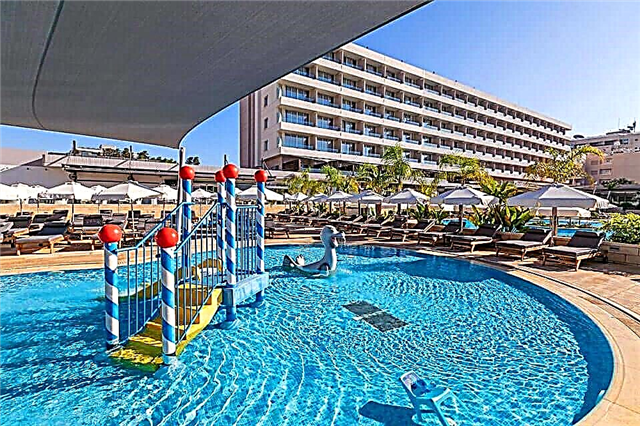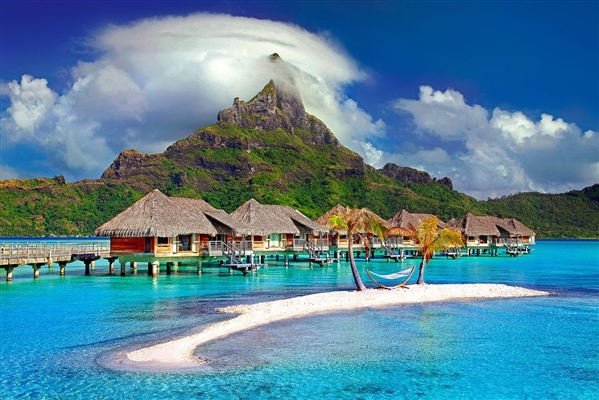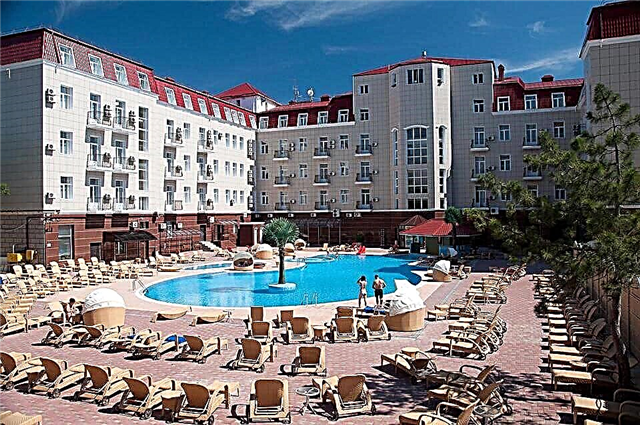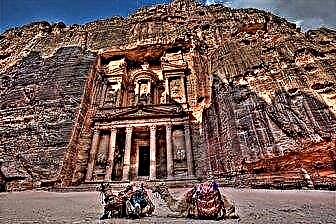People settled the territory of present-day Jordan several thousand years ago, monuments of all major historical periods have survived to this day. In its vastness you can see both rock paintings and ancient cities of the Greeks, Romans, Arabs. Castles-fortresses from the times of the Crusades have been perfectly preserved. The desert is a real landmark in Jordan. Many monuments are located in its spaces and allow you to view cultural artifacts, while studying the life of the Bedouins, admiring the local landscapes. Many places in the kingdom are associated with Christian religious culture and are mentioned in biblical legends. They attract many pilgrims.

The best hotels and hotels at affordable prices.
from 500 rubles / day
What to see in Jordan?
The most interesting and beautiful places, photos and a short description.
Amman city
The largest city in Jordan, the capital. It has a long history and many of its monuments, some of which are within the walls of the archaeological museum. Located in close proximity to the Dead and Mediterranean Seas. It is of great economic importance for the country, the center of industry.

Ancient city of Petra
A unique ancient structure - a city in the rocks. Ancient Petra was the capital of the richest kingdom, collecting tribute from caravans carrying spices. Gradually went bankrupt when trade routes became sea routes. An example of unique architecture, full of all kinds of mysteries. The unique landscape and buildings have been featured in films many times. It is the most popular attraction in Jordan.

Temple-mausoleum of Al-Khazne
The most impressive building in Petra. The mausoleum, completely carved into the rock. It has been perfectly preserved, although the façade has the greatest artistic value and expressiveness. Here Spielberg filmed one of the films about Indiana Jones.

Dead Sea
The huge salt lake, water and silt deposits create a healing effect. On the Jordanian coast of the sea, there are many resorts that use sea water for medicinal and cosmetic purposes. A popular holiday destination for local people and tourists.

Ancient city of Jerash
Pompeii of the East is a well-preserved remains of an ancient city. All architectural buildings date back to the times of the Roman Empire. There is an archaeological museum, a theatrical performance based on Roman military plots takes place almost every day, and throughout July the city is the site of an arts festival. Landmark of Jordan, the second most important after Petra.

Umm Qais (Ancient City of Gadar)
An ancient city built to repel military attacks. Traces of civilization have been found on this site for about five thousand years. He became famous under the Greeks and thanks to the Greeks. Destroyed by an earthquake. The ruins are varied: a church, amphitheaters, a forum, some of the buildings have been restored. There is a functioning archaeological museum. The hill offers a beautiful view of the surroundings.

Umm al-Jimal
Remains of buildings from a Greco-Roman city. They are called the Black Pearl of the Desert, as the buildings are made of black basalt - a rarity in ancient architecture. The buildings are well preserved for their age, among them there are two and three-storey buildings. A basalt desert begins near the city.

Aqaba city
The only seaport and resort in Jordan. Located on the coast of the Red Sea, the length of the coastline is almost 30 km. Sandy clean beaches and a wealth of underwater world make Aqaba a popular resort and diving center. Developed tourist infrastructure, many hotels in different price categories.

Citadel in Amman
Remains of an ancient settlement, which was primarily of a defensive nature. It is located on a hill above the city, on the Jebel al-Qalaa hill. The ruins of the ancient basilica and the Umayyad palace park are nearby.

Roman Amphitheater in Amman
The most significant monument of Roman civilization in the world, one of the most valuable historical sites in Jordan. A huge, perfectly preserved, amphitheater, carved into the rock. It still regularly hosts city cultural events (concerts, festivals). Capacity 6000 people.

Archaeological Museum in Amman
Located on a hill next to the Citadel. The collection is significant, represented by monuments from all epochs of civilization, beginning with the Neolithic. Separate collections of sculptures and ornaments are especially good.

Desert Wadi Rum
A desert, grandiose in area and expressiveness of landscapes. The landscape is uneven: there are mountains, gaps, crevices. Reddish sand and other rocks have created a whimsical landscape that has been used on numerous occasions by the cinema. The Martian was filmed here. The place is famous for the preserved rock paintings of ancient people. Bedouins now live in the desert.

Mount Nebo (Sky)
The famous biblical mountain, the site of the alleged death of the prophet Moses. In memory of this event, a memorial complex was erected on the top of the mountain, restored by archaeologists. Now there are memorial signs, a Byzantine church with fragments of ancient mosaics. Popular with pilgrims and tourists.

Jordan river
It flows into the Dead Sea, separates Jordan and Israel. The main waterway of the country. It is mentioned many times in the Bible. It was in the waters of this river that Jesus was baptized. A place of active pilgrimage. Along the banks and in the immediate vicinity there are many historical monuments of different time periods.

Ajloun Castle
Built in 1184, on top of a mountain, to protect the local mines. A powerful military building, a real fortress. Forests stretch around the castle, and Jerusalem can be seen from the upper viewing platforms. There is an archaeological museum at the castle.

Montreal Castle (Shobak)
Crusader castle, located near Petra. Their last stronghold in the Holy Land. After the expulsion of the knights, it fell into decay and gradually collapsed. There are many buildings in ruins, on some of the buildings you can see ancient inscriptions. A unique location that allows you to enjoy the incredible surrounding panorama.

Al-Karak fortress
A legendary defensive structure at an altitude of about 1000 meters. Multi-storey, inside - a real labyrinth. It is of historical value, in addition to this, an archaeological museum has been opened on the territory. The city of the same name has grown up around the fortress, which is attractive for tourists.

Desert caliph palaces
About 30 well-preserved buildings for various purposes in the middle of the desert. Caravanserais, baths, hunting lodges of the nobility - each of the palaces fulfilled its purpose and had a corresponding architecture. In the palace, a former bathhouse, there are frescoes, unique for Muslim culture, partially restored.

Dana Biosphere Reserve
Located on the slopes of the mountains, it includes several geographic zones, with appropriate vegetation in each. The territory is huge, flora and fauna are extremely diverse. Great place for hiking, especially in the spring. Mountain biking is possible. There are several trail routes in the reserve, it is better to go through them with guides. Accommodation options in the reserve are varied (hotels, camping, guest houses).

Mujib Nature Reserve
Created in the Wadi Mujib gorge, near the Dead Sea. A unique landscape - mountain ranges, gorges, between which the river flows. The reserve creates its own microclimate and many birds live there, there is a variety of vegetation (more than 400 species). There are routes for tourists, there are campsites.

Main Hot Springs
Thermal mineral springs, cascading waterfalls from a 30-meter height. The healing properties of this hot water have been known since the days of Ancient Rome. There is a spa center and a clinic nearby, which use spring water for their treatments.

Diving in Aqaba
The opportunity to dive with experienced instructors at several diving centers to choose from. One of the main tourist attractions in the city. The Red Sea is rich in inhabitants and picturesque reefs. Turtles, octopuses, exotic fish - all can be seen and observed in their natural environment.











